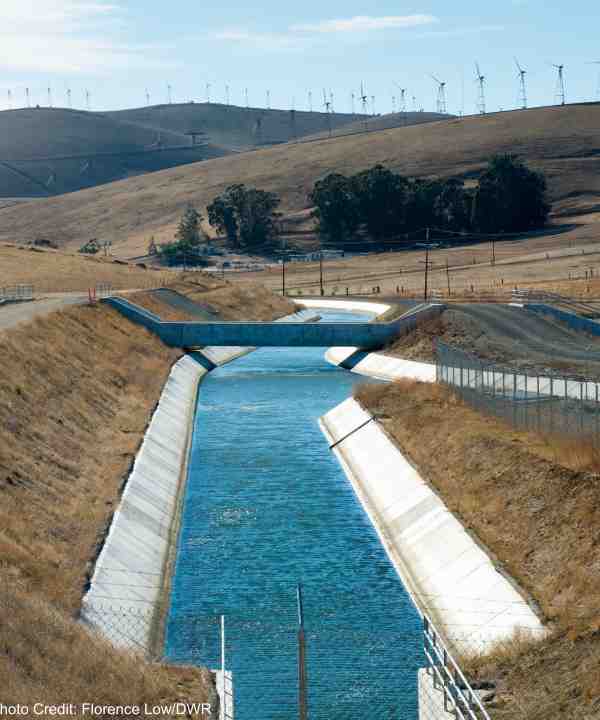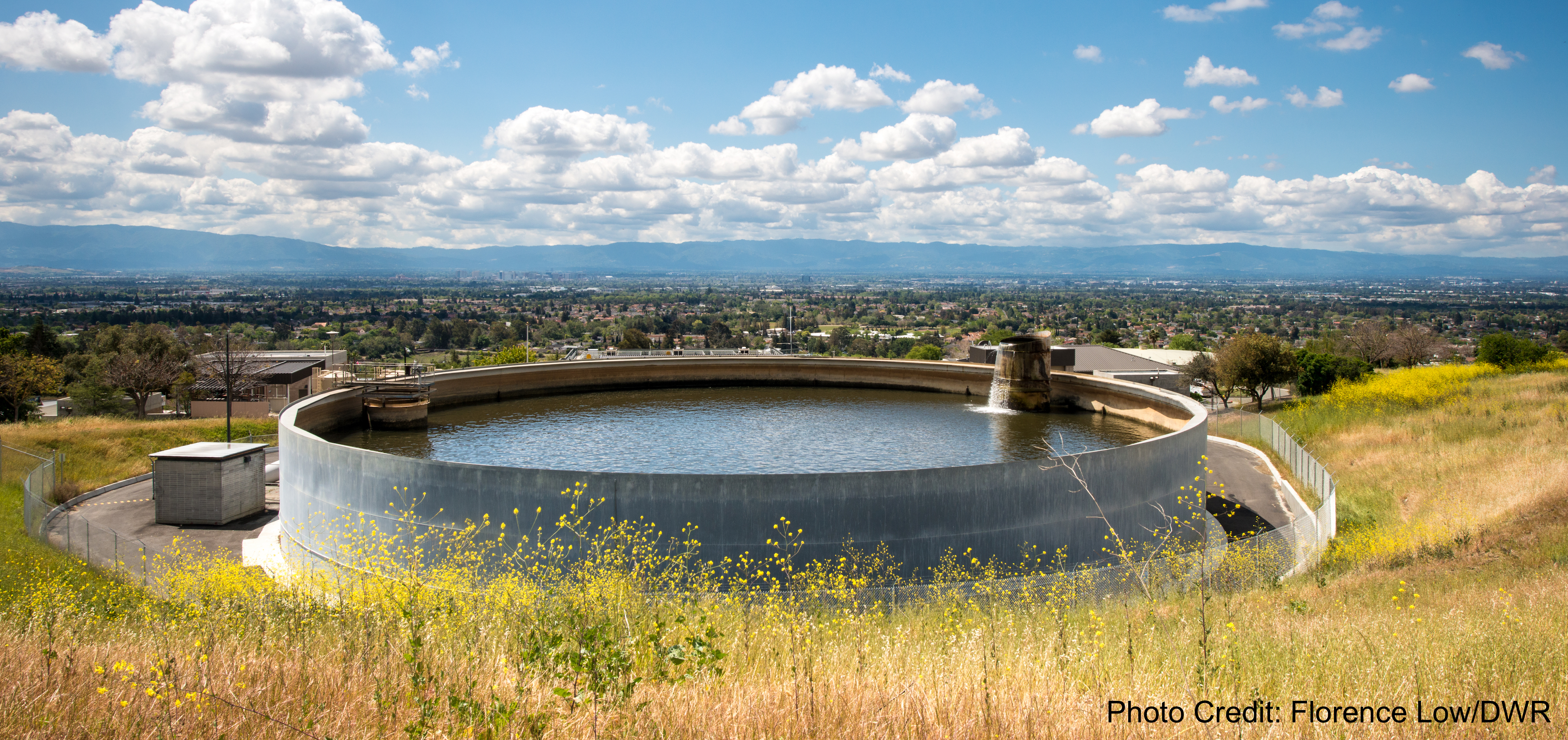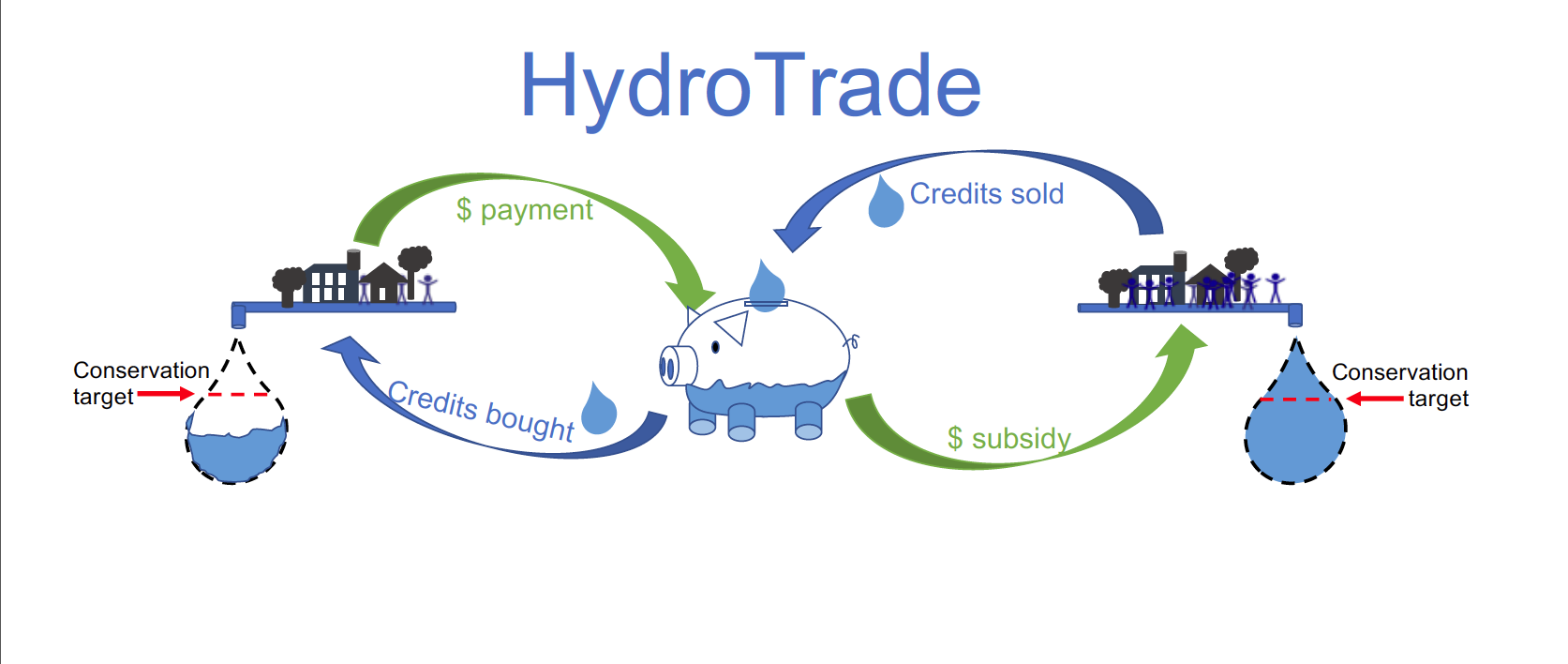Share the Wealth: A Cap-And-Trade System of Water Conservation and Resiliency?
Published on by Robert Brears, Founder of Our Future Water, Young Water Leaders, Mitidaption & Author (Springer Nature, Wiley) in Academic
California has struggled with drought for most of the last decade. From 2011-2015, the state experienced the driest four-year stretch in recorded history, leading to unprecedented water restrictions for residents, including a state mandate to reduce water use by 25 percent.
*****By Sarah Derouin*****
Heavy precipitation last winter relieved much of California, but dry conditions linger. Wildfires raged during the fall and early winter months, ravaging towns and hillsides from Los Angeles to Santa Rosa. A delayed start to this year’s rainy season has made 44 percent of the state “abnormally dry,” and fueled worries of a return to drought.

At the drought’s height, water conservation was a hot topic, but conservation levels varied widely as California utilities worked independently towards their state-mandated goals. Now Stanford researchers are considering a different approach to water management, taking a page from energy and climate playbooks . Patricia Gonzales, a doctoral student at Stanford’s Civil and Environmental Engineering Department and Newsha Ajami, director of Urban Water Policy at Stanford’s Water in the West and NSF-ReNUWIt initiatives, have proposed a cap and trade approach to water conservation based on local supply and demand realities. Papers detailing their approach have been published in Water Resources Research and Wiley Interdisciplinary Reviews: Water .

Supply and Demand
Safe water for drinking and irrigation has grown increasingly scarce around the globe, and is expected to dwindle further as the climate changes. California’s water system is no exception. In order to meet the state’s future water needs, the researchers stress that understanding people’s water-use behavior is key.
“People are a really big part of the water system, and they're also a really big source of uncertainty,” says Gonzales, explaining that knowing more about how people use — and conserve — water and changing water supply and demand dynamics can result in better projections of demand going forward. Not always tied to population growth, demand can be impacted by socio-economic and demographic factors as well as shifting social norms. For example, wealthier communities with larger lot sizes may use more water than more populated and/or lower-income areas. Messaging about water scarcity can also help the public become more water conscious across socio-economic realities.
Water supply varies greatly year to year with snowpack, rain and other factors. Utilities are further constrained by where they get their water from. Some utilities rely on just one source for almost all of their water leaving little flexibility if it’s compromised. For example, the San Francisco Regional Water System gets 85 percent of its water from the Tuolumne River alone, serving 27 different water utilities with a combined population of 2.4 million. The researchers argue this challenge is an opportunity for water managers and planners to embrace innovative strategies, including integrating more diverse water supply portfolios, and promoting a more collaborative governance approach to water management.
Trading a Resource
Looking at 26 communities in the Bay Area served by the San Francisco Regional Water System, the researchers explore how a system of tradable credits might allow utilities to meet their conservation goals more effectively. This market-based program approach has been used in energy, pollution emissions and water quality trading systems around the world. But until now, it has not been applied to water conservation efforts.

Conceptual diagram of a water conservation trading scheme.
Figure Credit: Patricia Gonzales
During a drought where the government mandates water conservation targets, each utility is tasked with figuring out how to meet those goals. However, some communities that haven’t been as forward on water efficiency strategies over the years may be able to conserve water in low-cost ways with relatively small investments, while others would have to invest in bigger projects to meet the same goals.
“What if instead you gave the region a target, and then you allow utilities to figure out the best way to achieve that target collectively?” says Gonzales. She and Ajami are proposing that communities, like the San Francisco Bay Area, band together and collaborate to see the smartest and most beneficial way to meet the targets.
Ajami explains that if a community has already done 'low-hanging fruit’, such as replacing toilets and showers with low-water versions, they have to move to more expensive options, like paying residents to replace lawns, which may or may not be enough to achieve their target.
Instead of this expensive option, the community would contribute to the overall conservation funding pool, essentially buying conservation credits from other areas.
“For example, they can either invest $1500/acre-feet to replace lawns, or they can use the trading platform to purchase conservation credits for a lower price, which can ultimately contribute to help another community replace their toilets,” says Ajami.
“The basic idea of cap and trade is to incentivize people to do things that are cost effective for them, but also potentially invest in the community and system as a whole.”
Watering the Future
The team is expanding the current platform, which they have labeled HydroTrade, to allow communities to not only share conservation credits but also develop and share other water supply sources in order to enhance regional resiliency.
“We did this proof-of-concept for conservation, but our ultimate goal is to enable water portfolio diversification and reduce reliance on a single supply source or imported water,” says Gonzales. Supplementing water sources by adding alternative water — like recycling water or capturing storm water — can help bolster supplies. Gonzales says, “You can use this kind of collaborative approach, not only for drought or emergency conditions, but also in terms of long-term planning and adaptation.”
By taking a closer look at efficiency and conservation trends and opportunities, as well as long-term water demand patterns at the regional scale, Ajami says utilities might be able to increase reliability and resiliency of their existing water supply despite population growth by smaller and smarter investments.
“Most of our current water infrastructure was built under a different climatic reality, and is now reaching the end of its design life. Hence it is losing its operational effectiveness. As communities are debating on how to meet their future water needs it is important to take a hard look at where our demand is going. We have an opportunity to add flexibility into our existing water infrastructure system by introducing innovative operational strategies while also promoting alternative, distributed and decentralized water sources, 21st century solutions for 21st century challenges” she says.
With more climate extremes expected in the future, freeing up water for users requires smarter thinking, says Ajami. “We need to encourage regional thinking and collaboration in order to meet our future water demand more effectively while avoiding unnecessary investment in large capital-intensive infrastructure, which belongs to the previous century and is not very adaptable to future climatic and social realities.”
Contact
Patricia Gonzales, School of Engineering at Stanford University
patgonza@stanford.edu, 520-444-2384
Newsha Ajami, Water in the West at Stanford University, NSF-ReNUWit
newsha@stanford.edu, 650-724-8162
Devon Ryan, Stanford Woods Institute for the Environment
devonr@stanford.edu, 650-497-0444
Attached link
http://waterinthewest.stanford.edu/news-events/news-insights/share-wealth-cap-and-trade-system-water-conservation-and-resiliencyMedia
Taxonomy
- Water Rights
- Water Scarcity
- Trading
- Economics
- Sustainable Economy
- Allocation Mechanisms
- Climate Change Resilience
- Green economy